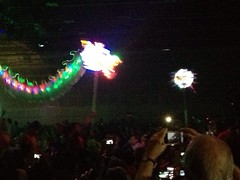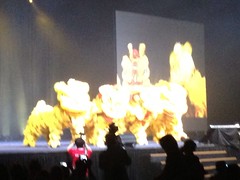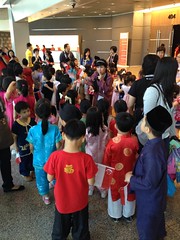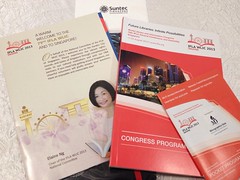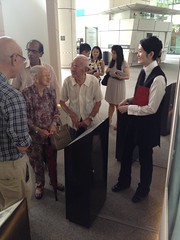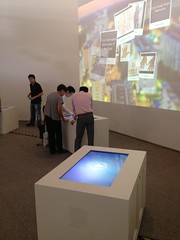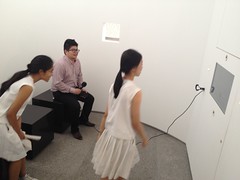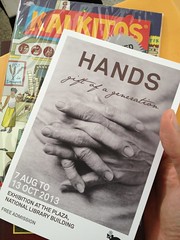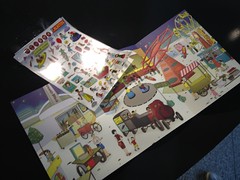The last time I blogged about
IFLA 2013 was
almost two years ago.
So it's finally here.
If you're like me, attending an event in an unfamiliar country, you would have questions like "How do I get around?", "Where to buy food?", "How much should I budget on a daily basis?", or "What to wear?"
And, if you also procrastinate like me, you might not bother to find out about local information until the very last minute. But then you might not do so because because your presentation is still not fully done and you're deep into panic mode LOL.
So I thought to share quick links to practical information, for the last minute prep.
General practical information
The
LonelyPlanet site has practical information. I like
Frommer's better, as it has more details. I didn't verify all information on prices but the amounts wouldn't change that drastically. At the very least, you should know there's a cost.
Power socket and supply
Singapore uses the
'Type G' British design. A universal adaptor socket would usually do the trick. The voltage is 220-240 volts, so you might want to check your equipment specs. Although I've never heard of any overseas visitors having their gadgets being fried by plugging in.
Internet Access
Most hotels should have WIFI. I'm not too sure if it's all free. There's always Starbucks and MacDonalds.
Maps: websites and apps
I recommend
Gothere.sg. As a local, I use it myself. The site loads fast. I've found the information reliable. You can find out how to walk to places, in addition to taking the MRT system, public buses, taxis and private cars.
If you have an iPhone, you can consider the free
Singapore Maps app from Apple Store.
This is the
map of the MRT, i.e. public train system.
Weather
I refer to
this site (from the National Environment Agency) all the time. You'll probably be staying in a hotel near the conference venue, so look for the square box that says "city".
Public toilets
Vast majority are free to use. You can find them in shopping malls. Plenty of public toilets, in reasonably clean condition, within walking distance.
Customs
I'm pretty sure librarians and information professionals will find they aren't going worry about the prohibited stuff (scroll to the bottom of
this page). Information
on this page, from the Singapore Customs, would also be useful.
-----
Singapore is a tourist-friendly place. I dare say most delegates can get by for the duration of the conference without too much planning. If you have your plane tickets, passport, credit card and some cash, you're good to go.
Oh,
don't forget to bring a copy of your IFLA conference confirmation email. You would also have checked out the official
IFLA WILC 2013 site.
The last time I attended a IFLA conference (more accurately, the IFLA World Library and Information Congress) was five years ago, in 2008. Had the privilege of attending IFLA in the years I served as the Information Officer for the
Libraries for Children and Young Adults Section.
Preparing for a conference trip can often have anxiety-filled moments. I hope this post would be of some help.
See you at the conference.















